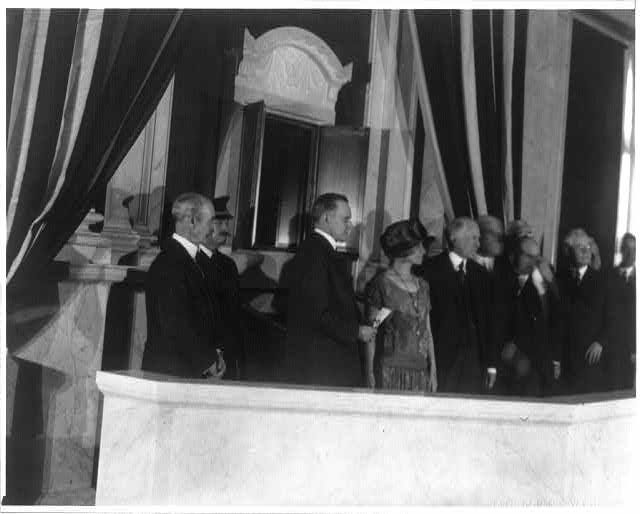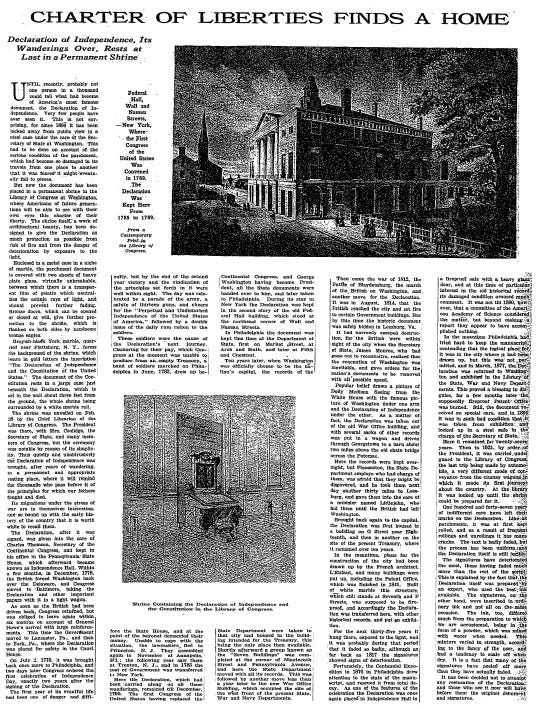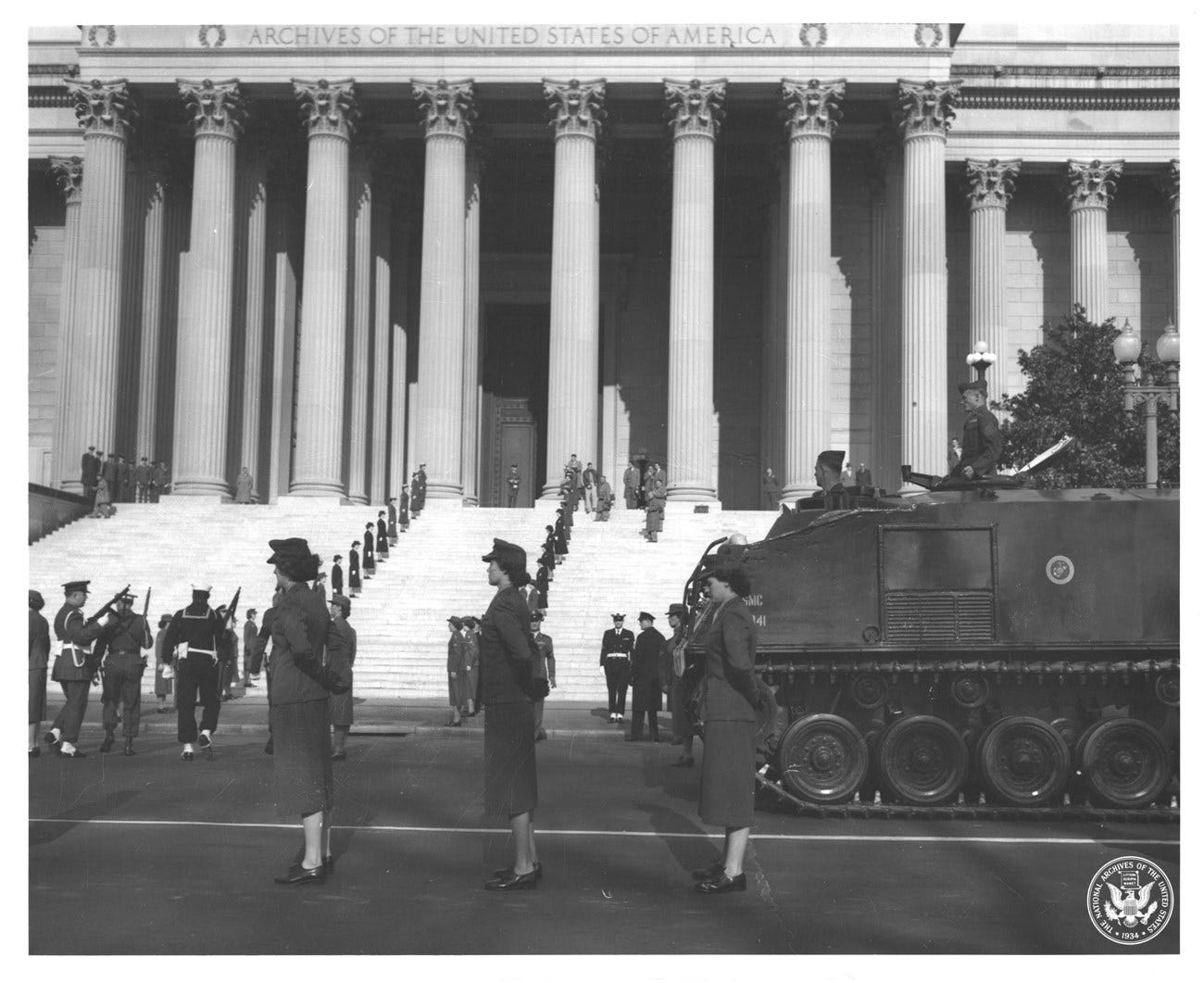Charter of Liberties Finds a Home
In 1924, the Declaration of Independence began public display in a new so-called "permanent shrine" at the Library of Congress. That "permanent shrine" lasted until 1952.
Since the country's founding, the physical Declaration itself was long controlled by the State Department, which moved it around through the years, primarily to various buildings within Washington, D.C. Through the decades, it was displayed at the State Department's headquarters, the Library of Congress, and the Patent Office. (Even though it's not a patent?)
Occasionally, the Declaration was displayed in a different city entirely, such as Philadelphia during the country's 1876 Centennial celebrations.
For three decades from 1894 to 1924, though, the Declaration was displayed in a cabinet at the State Department's library — in other words, virtually hidden from public view.
On February 28, 1924, the Declaration were officially moved to a supposedly "permanent" public display at the Library of Congress. President Calvin Coolidge, First Lady Grace Coolidge, Secretary of State Charles Evans Hughes, and Librarian of Congress Herbert Putnam all attended the ceremony:

The National Archives website describes a scene almost impossible to imagine with a sitting president today:
"Not a word was spoken during a moving ceremony in which Putnam fitted the Declaration into its frame. There were no speeches. Two stanzas of America were sung."
Coolidge earned his nickname "Silent Cal" indeed.
Not long after Pearl Harbor was bombed in December 1941, the Declaration was moved to Fort Knox, the heavily fortified compound where the U.S. maintains most of its official gold reserves.
The document was returned to the Library of Congress in 1944. (Not in 1945 or 1946, after World War II was over, but while the conflict remained ongoing? Seems a little premature.)
Still, the National Archives building was far newer, having opened in 1935 compared to the far more ancient Library of Congress. Accordingly, the National Archives had more advanced protections against threats including bombs and fire, plus better temperature controls to preserve the document in perpetuity.
So in 1952, custody of the Declaration was transferred to the National Archives, where it has remained on public display ever since. The transfer ceremony looked quite elaborate:
Charter of Liberties Finds a Home
Published: Sunday, April 6, 1924



